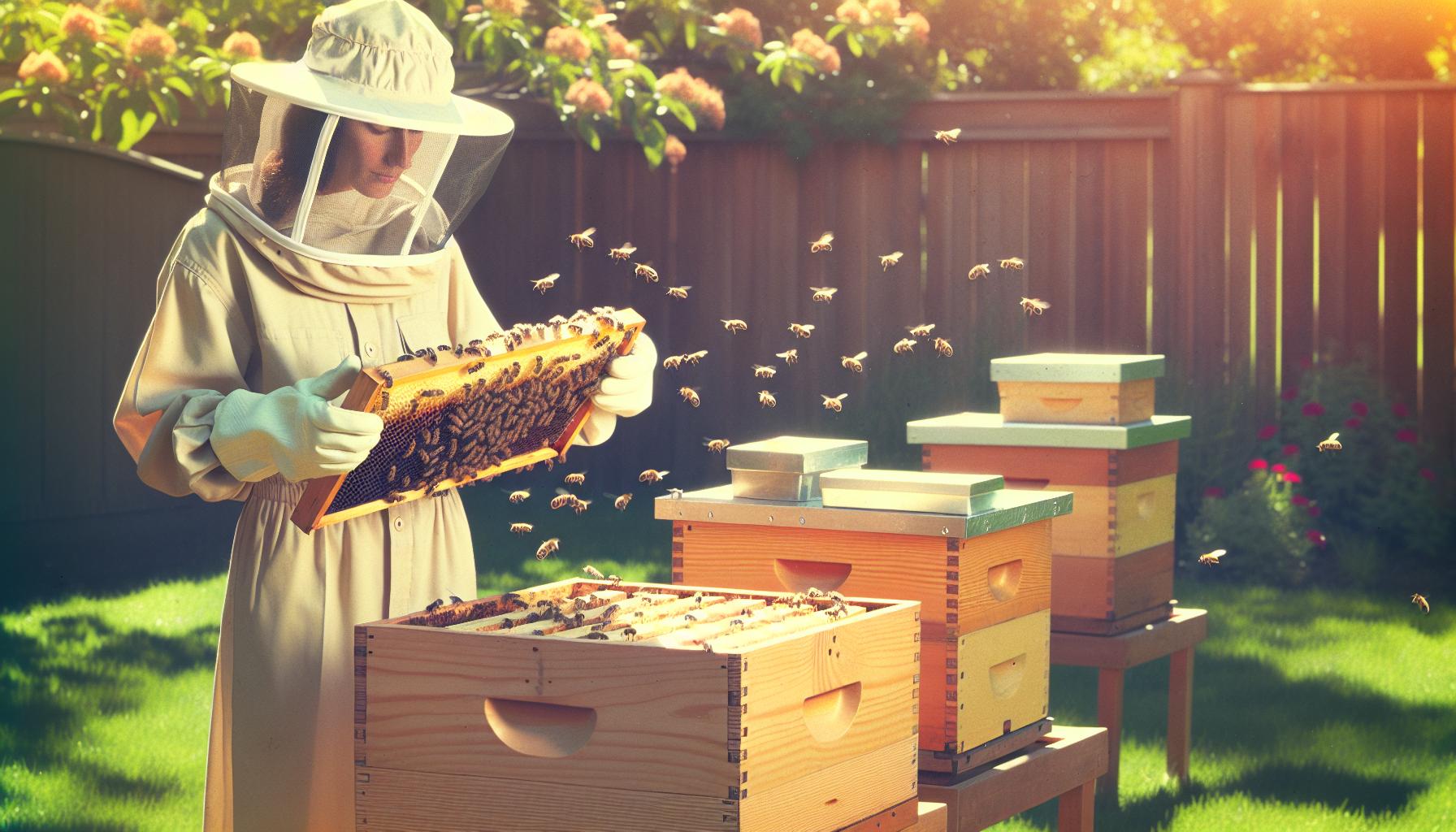
Top Bar Hive: A Complete Guide to Sustainable and Natural Beekeeping
Beekeeping has become an increasingly popular hobby and livelihood for those seeking to embrace sustainability and connect with nature. Among the myriad hive designs available, the top bar hive has gained recognition for its simplicity, eco-friendliness, and alignment with natural beekeeping principles. Its low-maintenance design and focus on supporting bees’ natural behaviors make it a favorite among beginners and experienced apiarists alike.
What Is a Top Bar Hive?
A top bar hive is a horizontal beekeeping structure designed for minimal intervention and natural bee management. Unlike the vertical stack design of traditional Langstroth hives, it features a single, elongated box with wooden bars across the top. Bees build combs downward from these bars, mimicking their natural construction habits.
Key elements of the top bar hive include:
- Horizontal Layout: Offers ease of access without disturbing the entire hive.
- Movable Top Bars: These wooden bars guide comb construction, allowing beekeepers to lift individual combs for inspection or harvesting.
- Natural Comb Building: The absence of foundation sheets lets bees freely construct comb, promoting healthier colonies and chemical-free beekeeping.
Benefits of Using a Top Bar Hive
1. Minimal Disturbance to Bees
Top bar hives allow beekeepers to access specific sections of the hive without disrupting the entire colony. This reduces stress and minimizes aggression, creating a calmer environment for both bees and beekeepers.
2. Cost-Effective Design
Requiring fewer materials than traditional hives, top bar hives are budget-friendly. They can often be constructed using basic tools and readily available materials, making them an accessible choice for hobbyists.
3. Sustainable Practices
By encouraging natural comb building and avoiding manufactured foundations, top bar hives reduce environmental impact and chemical exposure. This design aligns with the goals of eco-conscious beekeepers.
Key Features of a Top Bar Hive
1. Horizontal Structure
The hive’s horizontal design eliminates the need for stacking boxes, making management straightforward. Bees can build their comb naturally along the length of the hive, fostering an environment that mimics their instincts.
2. Natural Comb Growth
Without pre-installed foundation sheets, bees create comb to their specifications, which enhances colony health and adaptability. This practice also supports chemical-free beekeeping.
3. Easy Inspection and Harvesting
The top bars are removable, allowing beekeepers to check combs or harvest honey without dismantling the entire hive. This gentle approach reduces colony stress and physical labor.
Comparing Top Bar Hives to Other Hive Types
Top Bar Hive vs. Langstroth Hive
Langstroth hives, known for their modular and vertical design, are optimized for honey production and scalability. However, they require more expertise, materials, and tools, such as extractors. In contrast, top bar hives prioritize simplicity, natural bee behavior, and sustainability.
Top Bar Hive vs. Warré Hive
The Warré hive, another natural beekeeping option, features stacked boxes designed to mimic a hollow tree. While it encourages natural comb building, its vertical design can make inspections more disruptive and physically demanding. The top bar hive’s horizontal layout is less intrusive and easier to manage, especially for beginners.
Tips for Maintaining a Top Bar Hive
1. Optimal Placement
Place the hive in a sunny, wind-protected location, elevated at waist height for convenience. Ensure the area has minimal foot traffic and provide a nearby water source for the bees.
2. Regular Inspections
Monitor the hive for signs of pests, diseases, and queen productivity. Use non-invasive techniques to maintain a stress-free environment for the colony.
3. Sustainable Harvesting
Harvest honey during peak flow seasons, taking only surplus comb. Use a sharp knife to cut comb cleanly from the bars, leaving sufficient reserves for the bees to sustain themselves during winter.
Common Challenges and Solutions
1. Comb Collapse
Comb may collapse due to weight or heat, especially in poorly spaced or over-inspected hives. To prevent this:
- Space top bars properly.
- Inspect during cooler parts of the day.
- Avoid excessive handling during extreme heat.
2. Pest Management
Pests like Varroa mites, wax moths, and ants can pose significant threats. Regular inspections, sugar dusting for mites, and physical barriers (e.g., moats) around the hive base can help manage infestations naturally.
Conclusion
The top bar hive offers a balanced approach to beekeeping, blending simplicity, sustainability, and bee health. Its user-friendly design is ideal for beginners and those prioritizing natural practices. For seasoned beekeepers, it provides an alternative method to deepen their connection with the bees. By choosing a top bar hive, you not only support pollinators but also contribute to a more sustainable and harmonious way of living.
Frequently Asked Questions (FAQ)
Q: What is a top bar hive?
A top bar hive is a horizontal beekeeping structure where bees build comb naturally from wooden bars. It emphasizes simplicity and sustainable practices, making it a favorite among eco-conscious beekeepers.
Q: Why is a top bar hive good for beginners?
The horizontal layout is easy to manage and less invasive, requiring minimal tools and expertise. It simplifies inspections and supports natural bee behavior, making it beginner-friendly.
Q: How does a top bar hive differ from a Langstroth hive?
Langstroth hives stack vertically and use pre-installed foundations, focusing on honey yield. Top bar hives are horizontal, allowing bees to build comb freely, with less emphasis on production and more on sustainability.
Q: What are the main benefits of a top bar hive?
- Minimal bee disturbance.
- Natural comb building.
- Cost-effective setup.
- Alignment with eco-friendly practices.
Q: Can top bar hives be used in cold climates?
Yes, with proper insulation, wind protection, and sufficient food reserves. Ensuring the hive is placed in a sheltered area helps bees survive harsh winters.
Q: How do you harvest honey from a top bar hive?
Lift individual combs carefully, cutting away surplus honeycomb with minimal disturbance. Use fine mesh to strain the honey, preserving its purity and natural flavor.



Leave a comment